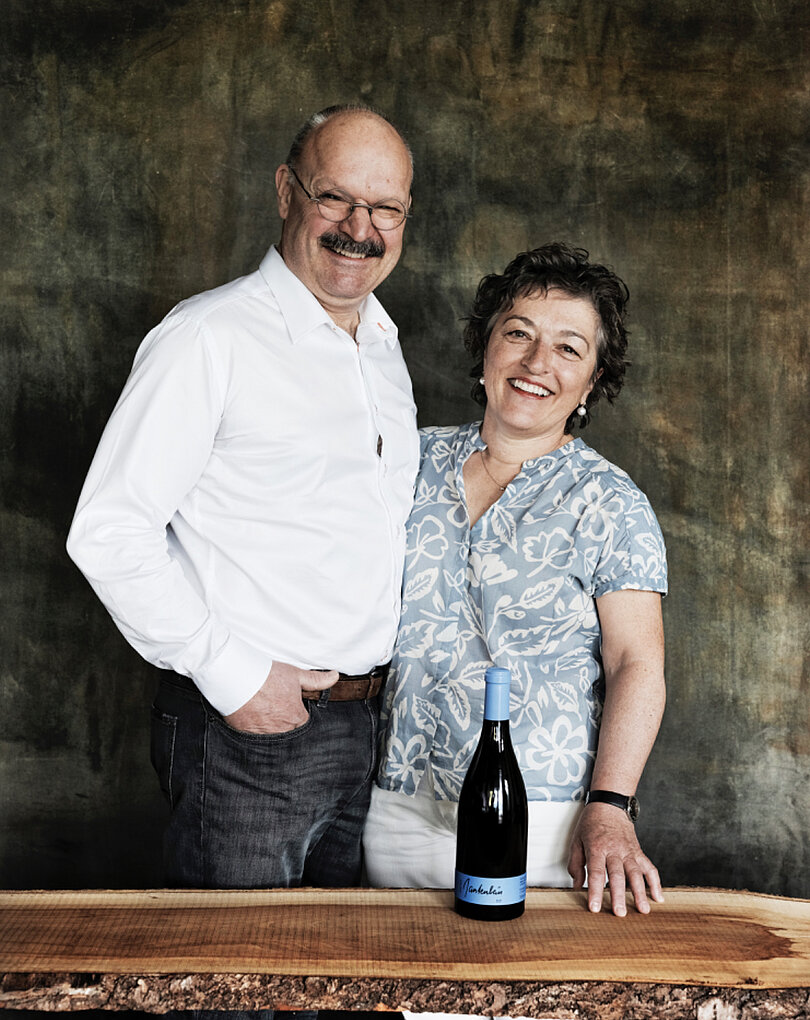Weingut Gantenbein is a modest but powerful winery that has won a position among the most prestigious names in the world of fine wine. It is located in the charming village of Fläsch in the Graubünden canton of Switzerland. Martha and Daniel Gantenbein have spent over thirty years using their love, accuracy, and unwavering commitment to create wines that capture the spirit of their distinct terroir. Their tale is of perseverance, ingenuity, and an uncompromising passion for winemaking.
A modest beginning with lofty goals
The Gantenbein tale started in the early 1980s when Daniel and Martha made the decision to turn their love of winemaking into a career since they were both fascinated by it. They planted their first vines in 1982 with little more than willpower and an openness to new ideas. The world’s most famous wine regions, especially Burgundy, served as inspiration for the self-taught winemaking duo. Producing wines that could compete with the greatest in the world was their obvious objective.

The Gantenbeins began with just 1,000 bottles of Pinot Noir and followed a strategy that prioritized quality over quantity. They made a commitment to careful viticulture from the start, closely monitoring each step of the grape-growing and winemaking procedures. Their wines would grow to be known for this foundation of attention to detail and care.
A Terroir Unmatched
The distinctive terroir of the Graubünden region, which is tucked away in the Alps’ foothills, is essential to the flavour of Gantenbein wines. The vineyards are situated on gravel, slate, and limestone soils that drain nicely. Excellent drainage and water retention are made possible by this combination, giving the vines the best possible growing circumstances. The slate and gravel improve drainage and warmth, allowing the grapes to develop completely even in the cool environment of the area, while the limestone adds structure and minerality to the wines.
Because the vineyards are situated on south-facing slopes, they receive the most sunlight possible during the growing season. This feature, along with the refreshing alpine winds, keeps the grapes’ sugar growth and acidity in the ideal range. In order to promote competition, the vines are planted closely together, which lowers yields but produces grapes of remarkable quality and concentration.
The Gantenbeins make sure that only the best grapes are used in their wines by managing their vineyards carefully, which includes rigorous pruning and selective harvesting. They maintain the integrity of their wines while using sustainable agricultural methods since they understand how important it is to protect the land for coming generations.
A Union of Innovation and Tradition
The Gantenbeins accept innovation without fear, despite their traditional philosophy. This blending of the ancient and the new is evident in their winery. The winery’s state-of-the-art technology, which includes a gravity-fed system that reduces grape handling and maintains grape integrity, was designed with efficiency and accuracy in mind.
Their utilisation of specially designed wood fermenting tanks is among their most noteworthy breakthroughs. The unique character of Gantenbein wines is enhanced by these tanks, which are made of Swiss wood and provide ideal fermentation conditions. To enhance the richness and elegance of their wines, the Gantenbeins also use classic winemaking methods including spontaneous fermentation and ageing in French oak barrels.
The Wines: Evidence of Superiority
The three grape varietals that Weingut Gantenbein specialises in are Riesling, Chardonnay, and Pinot Noir.
The flagship wine of Weingut Gantenbein is Pinot Noir, which reflects the couple’s love of Burgundy. The Pinot Noir, which is cultivated in soils rich in limestone and grown in the region’s chilly temperature, is renowned for its rich, multi-layered palate, deep ruby colour, and intense scents of red fruit. It offers a genuinely exceptional expression of the grape by fusing elegance and strength.
Chardonnay: Gantenbein Chardonnay has a rich yet precise profile, influenced by Burgundian great whites. This wine demonstrates the harmony of ripeness and freshness possible in Graubünden’s distinctive terroir, with notes of citrus, stone fruits, and a hint of minerality.
Riesling: Made in considerably lower amounts, the Riesling showcases the vineyard’s diversity. This exceptional wine shows that Swiss Rieslings have the ability to compete with their German counterparts thanks to its crisp acidity, flowery notes, and lively, mineral-forward finish.
With an unwavering dedication to quality over quantity, these grape types are painstakingly grown and vinified to capture the spirit of the terroir.
The Tasting notes